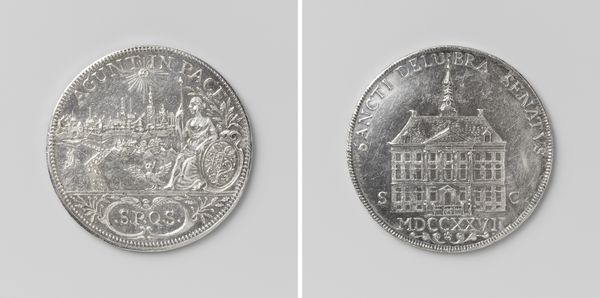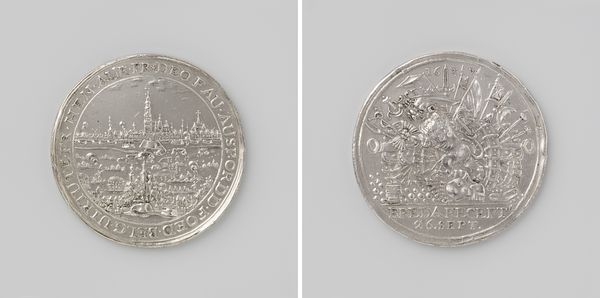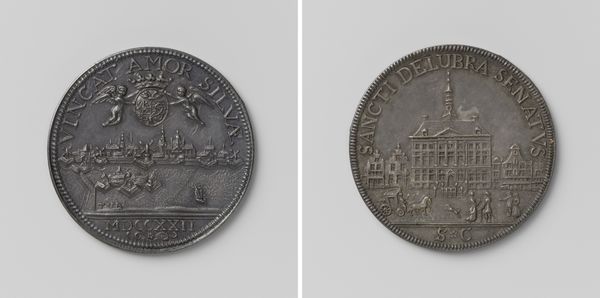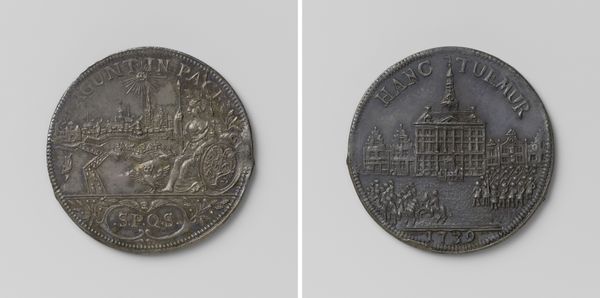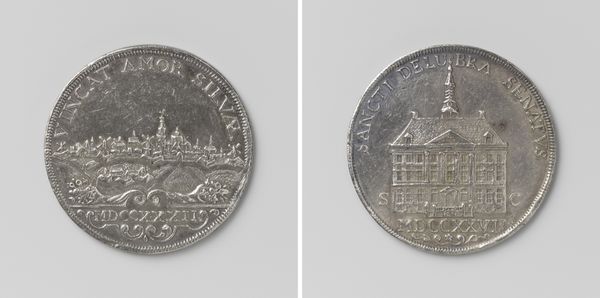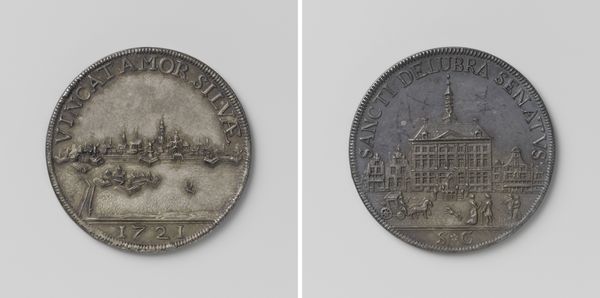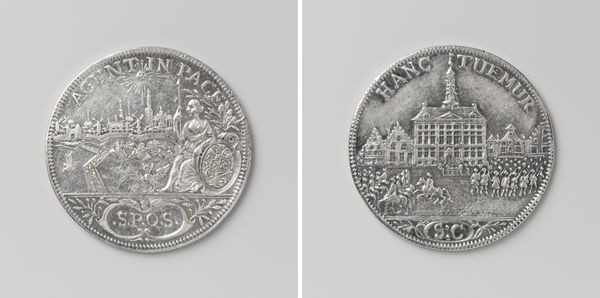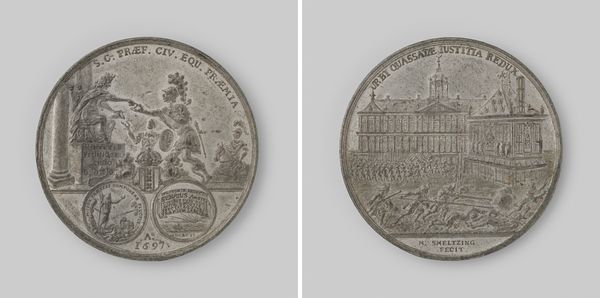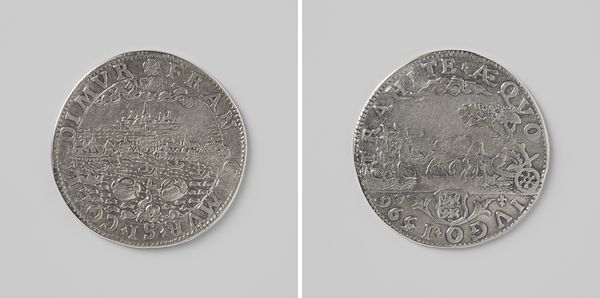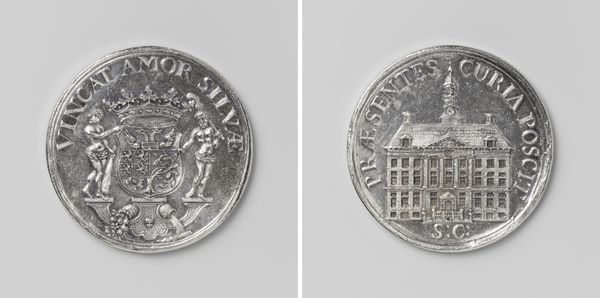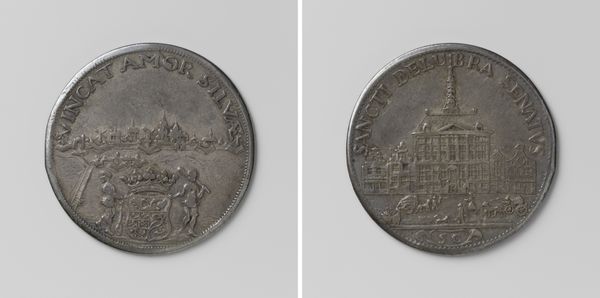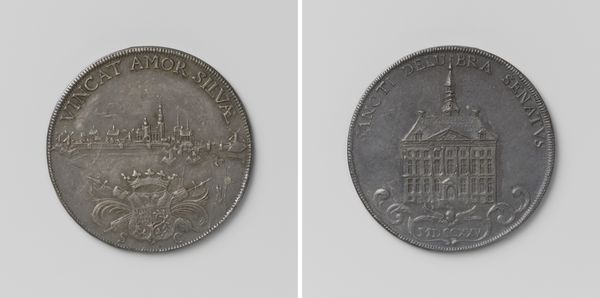
metal, relief, sculpture, engraving
#
baroque
#
metal
#
relief
#
sculpture
#
history-painting
#
engraving
Dimensions: diameter 2.7 cm, weight 6.46 gr
Copyright: Rijks Museum: Open Domain
Editor: So, this is a metal "Vroedschapspenning van de stad 's-Hertogenbosch" from 1721, crafted by Theodorus Casparus van Berckel. It’s got such intricate detail. It really feels like a frozen moment in history, a very deliberate attempt at civic pride, but I wonder… what stories are actually embedded within this piece? Curator: A crucial question. Beyond the display of civic power, consider what it omits. The coin valorizes the 's-Hertogenbosch council, but at whose expense? Where are the laborers, the marginalized, those excluded from the "Vroedschap"? The imagery promotes a particular narrative of order and prosperity that serves the elite. Who gets to be a part of history? Editor: I see what you mean. It presents a very curated image, literally! And this almost baroque style probably reinforces this notion of hierarchy. But does the engraving medium itself have significance? Curator: Absolutely. Engraving, especially on currency, disseminated power. Think of it as an early form of propaganda, solidifying and circulating a particular version of events, reinforcing societal hierarchies. It controlled the narrative and access to a symbolic form of wealth and status. Who decided what got memorialized? How are these decisions inherently political? Editor: So, by circulating these images of power, it’s not just recording history, but also shaping public perception and perpetuating social norms. What are your thoughts on the Latin inscriptions, "Vincat Amor Suiva" and "Sancti Del Ubra Senatis"? Curator: The Latin further solidifies the coin’s elite status. It speaks to a privileged class, setting itself apart. It masks vernacular realities with classical language to convey legal and divine authority, thereby asserting an unassailable position of superiority. It's about who possesses not just power, but also knowledge. Editor: I never thought about it that way. I initially viewed this piece as a beautiful, detailed depiction of history. Now, I see it as a carefully constructed message that promoted a specific, perhaps biased, narrative. Thank you! Curator: The beauty is in uncovering these layers and engaging in critical discussions. Each object provides a new way of thinking about social forces and identity in history and their ongoing impact today.
Comments
No comments
Be the first to comment and join the conversation on the ultimate creative platform.
